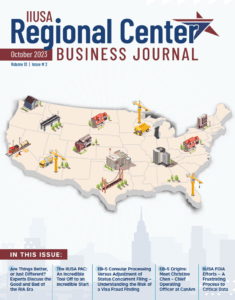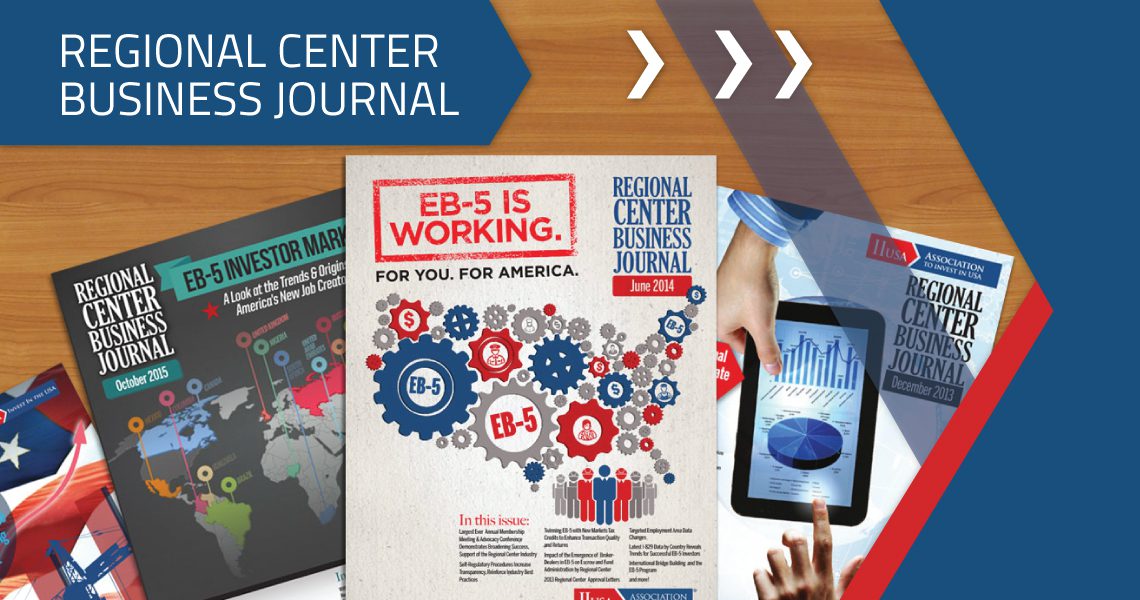Vietnam EB-5 Demand : A Look to the Horizon
by Mina A. Tran, Founding Partner, Tran Law Group
Vietnam is currently enjoying its strongest economic growth in five years, amidst worries about political instability in the wake of recent elections and maritime aggression from China. The mix of economic and political circumstances has created a robust environment for EB-5 demand.
Vietnamese investors are in many ways like investors everywhere. They are concerned about the financial validity of a project and the security of their immigration status. Unlike most investors from China, however, Vietnamese have long-standing relationships with Vietnamese communities in the United States. Many have traveled extensively in the United States and may already be conducting business here. As such, Vietnamese investors tend to be sophisticated about American life and business norms, making the EB-5 program both attractive and suspicious to a potential investor.
For years, Vietnamese families have been stringing together a series of family-based immigration applications in order to unite an entire family in the United States. This usually starts with a child who comes to study, marries, becomes a citizen and then petitions for the parents and siblings. While this is a tried and true path, it can take dozens of years and can be expensive once educational costs, fees, and opportunity costs are taken into account. And, of course, life happens during those years: marriages, divorces, births, deaths and most importantly increasing age. Many children of these families can age out and be left alone in Vietnam while the rest of the family is able to immigrate. The fact that EB-5 allows a family of parents and unmarried children under 21 to immigrate all at once is one of the most appealing aspects of the program for many Vietnamese families.
The diaspora of Vietnamese refugees planted immigrant communities all over the world with many Vietnamese having businesses, family members or children studying abroad in Australia, Canada, Singapore and the U.K. The strongest ties are with the United States, especially Southern California, which is home to the largest Vietnamese community outside of Vietnam. But the U.S. EB-5 program faces stiff competition from investor visa programs offered by Australia, Canada, Singapore, the U.K., and other countries. Many of these other programs offer the security of investment in government bonds or projects, and relatively less arduous paperwork and procedures. Some Vietnamese investors have been victim to bad EB-5 projects, unscrupulous operators and misinformation, creating a sense of mistrust. And this mistrust is not easy to overcome, as relatively few Vietnamese investors have yet completed the entire EB-5 program cycle and obtained both the permanent green card and the return of their investment capital.
Working with Vietnamese migration agents can be a challenge, as the staff in many offices are earnest but lacking in training and first-hand hand experience with the American immigration system. As a result, they are unable to operate as independently as Chinese migration agents and require more guidance from the Regional Center as well as the legal community. Of particular concern, Vietnamese agents tend not to have a strong concept of agency or understanding of U.S. securities laws. Sales techniques are not particularly nuanced, and presentations often feature guarantees of financial performance or promises of something extra. Responding to demand from investors to see all claims in writing, agents may even provide offering document supplements or contracts to investors without informing the project operators or Regional Center. The agents making the claims may not be aware that these representations can be attributable to the Regional Center and the project. Agents may rely on the lengthy immigration process to defer the need to make good on their promises, or they may deny having made the promises and claim investor misunderstanding.
Migration agencies in Vietnam generally lack infrastructure and organization, and are not as formalized as in China. Even the most successful of those calling themselves agents have yielded dozens of investors in recent years, not hundreds. The China model of large seminars and presentations is not as successful in the Vietnam market, and agents do not dominate EB-5 referral networks in Vietnam. Potential Vietnamese investors are likely to turn to trusted friends, family and business associates, rather than to migration agents, for advice and guidance through the EB-5 process. Reliance on a personal network is common among investors of all nationalities, but the Vietnamese investor’s network may stretch across the globe. It is not uncommon for a personal contact to travel to the project site, meet with the regional center and attorney, shop several different projects in the United States, and report back to their network in Vietnam.
Desire for anonymity supports the importance of personal referral networks for EB-5. Potential EB-5 investors in Vietnam are often either Communist Party members or embedded in the Party’s infrastructure in order to conduct their daily business. While many are not card-carrying members of the Party, their livelihoods rely, at least, on the goodwill of the Party. As such, if they are considering any investor immigration program, they will want as much anonymity as possible. Referral sources or agents may act like surrogates for the investor in gathering and confirming information, and in representing the investor at the initial meetings. There are usually multiple, rigorous private discussions before the actual investor is introduced to the EB-5 project operator. Building trust and personal relationships is key to success in Vietnam. In Vietnamese, this concept is called uy tin.
On the legal front, Vietnamese policies do not allow an individual to invest internationally, especially for immigration purposes. Until recently, the majority of Vietnamese were unable to move funds from Vietnam to anywhere in the world legally. Past EB-5 investors had to trust a migration agent or representative offering a “side door” procedure that would allow for legal transfer of investment funds. While some migration agents may have a viable procedure, many do not. Some EB-5 investors found themselves with I-526 petitions denied due to path of funds problems, or even worse, losing the entirety of their investment capital as it disappeared along with the migration agent. Thankfully, that is changing.
Vietnamese investors are now able to obtain a license issued by the Vietnamese Ministry of Planning and Investment to invest money outside of Vietnam. These licenses allow a Vietnamese national to deposit U.S. dollars into a government-approved bank and legally wire money directly into a U.S. escrow account for an EB-5 project. The investment license application can be invasive however, requiring information about the EB-5 project as well as the investor’s personal financial information. It can also take up to several months to obtain. Requirements are not always clear. The newly-elected National Assembly leans towards legal hard-liners who are likely to diligently enforce legal and monetary regulations. This will result in attentive review of applications for investment licenses. Time will tell whether this increased scrutiny will bring clarification to the requirements or bog down the procedure so much that it will be too difficult to obtain an investment license for EB-5 purposes.
In 2015, the number of EB-5 visas issued to Vietnamese nationals was 280, nearly double the 159 visas issued the year before. 280 visas represents about 140 approved I-526 petitions, assuming an investor has a family of four. Even if the number of approved petitions were to double again or even triple in this year, Vietnam remains a distant second to China. However, Vietnam remains an exciting horizon for the EB-5 program and cautious optimism would not be misplaced.








